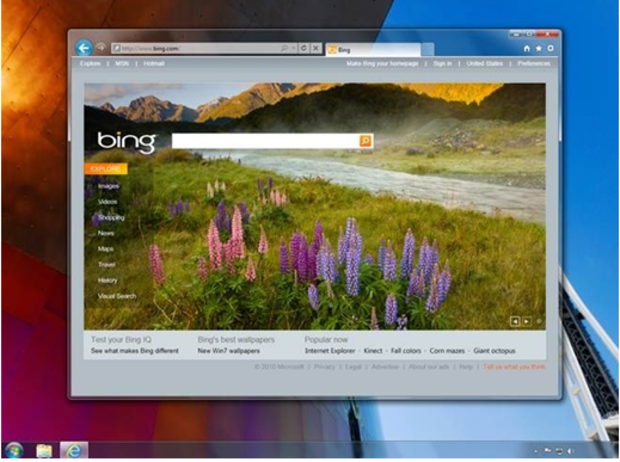Microsoft's IE9 Look Leaks to the Web
Thanks to Microsoft's Russian subsidiary, the world now has a pretty good idea of what Internet Explorer 9 will look like.
The Russian folks were kind enough to briefly post an image and some details that had yet to be shared about the browser. And although they pulled it down, ZDNet blogger Mary Jo Foley captured the information and screenshot.
More than anything else, the screenshot shows a browser that attempts to offer a minimalistic user interface and leave as much room as possible for the Web sites. When combined with the browser's hardware acceleration, the hope is to pave the way for Web sites that are as application-like as possible.
Microsoft declined to confirm the details Wednesday of what had been posted to its Russian site.
However, the look is consistent with what IE team member Ryan Gavin
"The browser is the theater," Gavin said in the interview. "We're not the play."
The browser appears to go as far as to allow people to pin certain sites to the desktop and open them in their own windows without any clear indication that they are using IE at all. According to Foley's Bing translation of the Russian site, there will be certain sites that are "recognized" or "protected" and can be pinned to the taskbar and launched with their own icons.
Microsoft plans to
The invitations for the event do mention "the beauty of the Web" and "unlocking the native Web."
Until now, though, the focus had been on several key features of the browser's engine, including the hardware acceleration capabilities, improved JavaScript engine, and broader support for HTML5 and other standards. Microsoft first showed those features at the Mix10 event in March in Las Vegas, though it had
The details on the Russian site reveal a browser that borrows much from Windows 7, including the ability to tear off browser tabs and have them "snap" to a particular part of the screen, similar to the way documents and applications already do in the latest version of Windows.
There is also a unified search and address bar, something already seen in Google's Chrome. However, having learned from criticism of Google--as well as its own considerable issues with regulators--I'm hearing that Microsoft will make the choice of whether to let the bar suggest sites as you type a completely opt-in affair.

